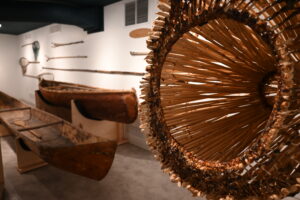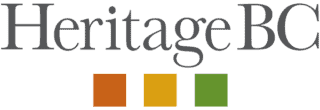Honouring the Land and Living Culture at Secwépemc Museum and Heritage Park

Photo by Nicole Barker
As we continue reimagining what a heritage conference can be, we’re proud to introduce our second host partner, the Secwépemc Museum and Heritage Park. Situated on the ancestral territory of the Tk̓emlúps te Secwépemc, the Museum offers not only a powerful learning environment, but a vital opportunity to engage with a living culture that has thrived here since time immemorial.This isn’t just a venue. It’s a place of active cultural continuity and learning, where ancestral knowledge informs present-day practice, and where history is told with honesty, care, and complexity. In our planning conversations, Museum Staff Supervisor and Registrar, Lachlan Gonzales, spoke about the importance of place-based learning. “Every element of this site tells the story of a culture embedded in place,” he shared. “Despite the impacts of colonial genocide, the strength of Secwépemc culture endures. Sacred songs are still sung. Traditional activities continue—sometimes with modern tools, but always with ancestral values and teachings at the core.”
Visitors to the Museum will encounter more than belongings—they’ll engage with stories, language, and a living relationship to land. From a puppet play area designed to teach children Secwépemc stories, to the ethnobotanical gardens and 2,000-year-old winter village site(*), the experience is rooted in both tradition and present-day practice. “Language,” Lachlan emphasized, “is especially important. It’s not just about preserving words.It’s about maintaining a vital link to land, culture, and family.” The Museum’s thoughtful integration of Secwépemctsín into interpretation and storytelling offers a model for institutions everywhere.
The Museum also bears witness to difficult truths. The Kamloops Indian Residential School is a painful part of this landscape, and the Museum approaches this history with care and courage. Tour guides Jackie and Ryan offer powerful, unflinching accounts of the trauma inflicted by the residential school system—from cultural genocide to abuse and intergenerational impacts. As Lachlan noted, “There’s active reconciliation and healing happening, but it will take decades,maybe a century,to truly recover.” The Museum holds space for this work, helping both community members and visitors understand the weight of this legacy.
Kúkpi7 Rosanne Casimir shared that on behalf of Council, she is honoured and proud of the collaboration and partnership between the Secwépemc Museum and Heritage Park for the 2025 Heritage Conference, and we are grateful to the team for their generosity, wisdom, and leadership. This collaboration invites conference participants to learn directly from Tk̓emlúps’ experience, with opportunities to hear from local guides, knowledge holders, and cultural leaders. This kind of grounded, community-led learning not only strengthens relationships but creates richer, more nuanced discussions that extend far beyond our usual professional silos.
As we gather in Tk̓emlúps this May, we invite all attendees to approach the Secwépemc Museum and Heritage Park with respect, curiosity, and humility. Ground rules for visiting the site will be shared on the day to help create a safe and reciprocal learning space for all.
View the 2025 conference schedule.
Notes:
(*) Please note that the Heritage Park that houses the ethnobotanical gardens and 2,000-year-old winter village site, is currently closed to the public.
